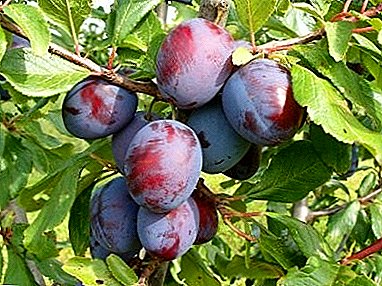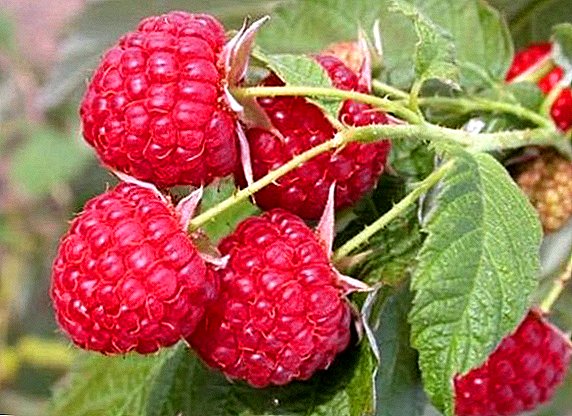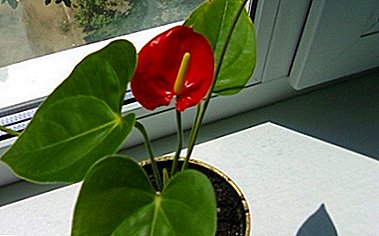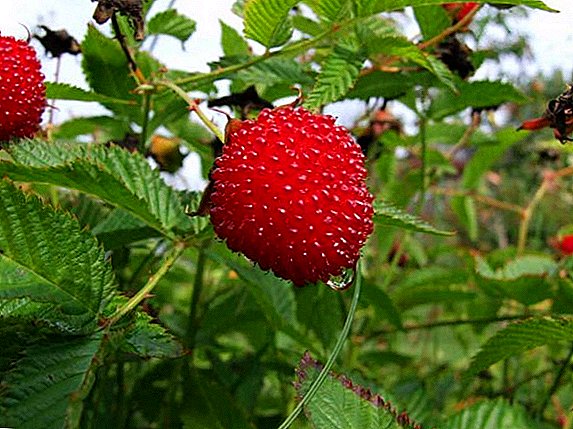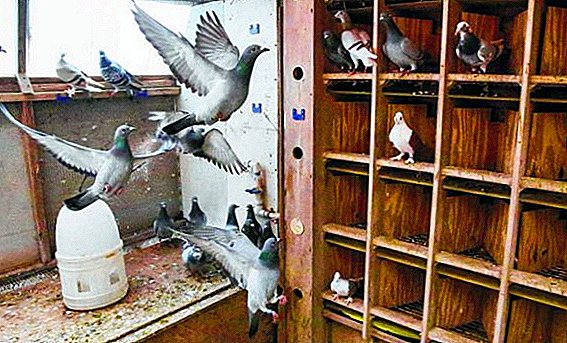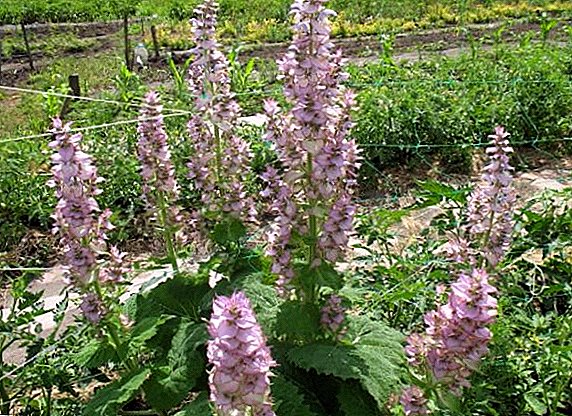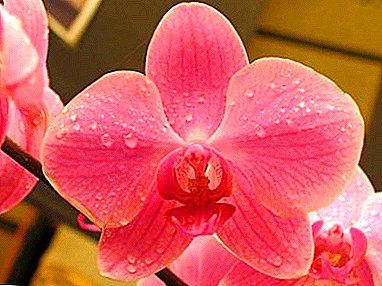
Orchids are very beautiful plants that are actively grown at home. But there are situations when the flower begins to fade slowly and ceases to bloom. There may be several reasons for this, but most often this happens because of pest damage, with photos and descriptions of which every florist should be familiar with. In this article, we learn what parasites threaten the flower and how to deal with them.
What are the dangers?
Since the pests feed on the juice and nutrients in the orchid, it stops growing, flowering stops or becomes scarce, the leaves change shape, become elongated. After a while, the phalaenopsis will start to wither and then die. What parts of a plant strike? Pests mainly affect the stems, roots and leaves of the plant.they suck the juice out of these elements, causing the flower to wither and die.
How to find out about their existence?
 Most often, parasites attack a flower in the summer. There are several ways to detect them:
Most often, parasites attack a flower in the summer. There are several ways to detect them:
- At night, put a slice of an apple or cucumber around the plant right in the pot. In the morning you can see who came to eat.
- This method allows you to identify insects that live in the root system. It is necessary to immerse the pot with a flower in a container with water. Parasites within 1-2 minutes will quickly float.
Means to fight
Chemical
To get rid of pests that hit phalaenopsis, you can, if you use the following drugs:
- Aktara. This drug has a systemic effect on pests such as scab, chervintsy, aphid and thrips. At the same time the tool is absolutely safe for others. When using it, the plant receives protection for up to 2 weeks.
- Aktara. It is possible to use means for spraying or watering. Processing carried out with an interval of 7-10 days.
- Actellic. This drug is effective against aphids, whitefly, mites, fleas, scutes, and thrips. Sometimes even one treatment is enough.
- Agrevertin. This remedy acts against the same pests as the previous drug, but only it has a weaker effect. To prepare the solution, take 1 liter of water and 5 ml of the product.
- Bi 58. This is a powerful drug of universal application. Disposable treatment is carried out with a solution obtained from 30 ml of product and 1 liter of water.
Folk
You can get rid of pests with the help of proven home remedies:
- Phalaenopsis leaves can be treated with a cotton swab dipped in vegetable oil. Under the oil film, cherventsy and shchitovki will start to choke. To carry out processing in the morning or in the evening.
- To carry out oil spraying should take 1 liter of water and 40 ml of olive oil. The resulting emulsion is applied to the affected areas. To do the procedure 1 time per week 3 times.
Reference! In hard-to-reach places, you can use a brush to apply oil.
- Grind a clove of garlic, and the resulting juice to process the affected places. Repeat treatment 1 time per week 3-4 times.
Biological
For the treatment of phalaenopsis such biological preparations are effective:
- Bicol. This is an acaricidal drug that is derived from the bacterial strain Bacillusthuringiesisvar thuringiesis. Apply to eliminate spider mites. Bicol quickly eliminates pests, as it has an intestinal effect.
- Verticillin. This is an insecticide that was derived from the fungus Verticilliumlecanii. The drug is used in the fight against whitefly. Its effect lies in the fact that the conidia or blastospores of the fungus seep through the integument of the insect and penetrate into its body. There they grow and infect his organs.
Common harmful insects with photo
Pliers
 These pests can infect the plant in the store or at home. Ticks pierce phalaenopsis leaves, causing them to hurt., dry out and fall away. Buds can not open, and instead of this slow die. The parasite can be recognized by the presence of a cobweb on the leaf plate. You can get rid of ticks if you collect them with your hands and put them in water. You can also spray the plant with Fitoverm once every 2 weeks.
These pests can infect the plant in the store or at home. Ticks pierce phalaenopsis leaves, causing them to hurt., dry out and fall away. Buds can not open, and instead of this slow die. The parasite can be recognized by the presence of a cobweb on the leaf plate. You can get rid of ticks if you collect them with your hands and put them in water. You can also spray the plant with Fitoverm once every 2 weeks.
Thrips
 These little pests live practically everywhere in the gardens. They have a black color and 2 pairs of wings, so moving from one plant to another is not a problem for them. They hide in the ground, so it is much more difficult to find them. After the bugs on the foliage silver traces remain. Thrips suck the juice from phalaenopsis, and in the roots they lay the larvae. To overcome the pest, you need to spray the flower with the complex solution Aktellika and Fitoverma.
These little pests live practically everywhere in the gardens. They have a black color and 2 pairs of wings, so moving from one plant to another is not a problem for them. They hide in the ground, so it is much more difficult to find them. After the bugs on the foliage silver traces remain. Thrips suck the juice from phalaenopsis, and in the roots they lay the larvae. To overcome the pest, you need to spray the flower with the complex solution Aktellika and Fitoverma.
White fly

It is a butterfly of small size and milky color. It feeds on the sap of the plant, and breeds directly on the stems. After the defeat of the White Feather, Phalaenopsis becomes sluggish and weak., its leaves turn yellow and fall off. Since the whiteflies fly perfectly, the larvae can be laid right under the leaves. The parasite can be eliminated with the help of a solution obtained from 1 l of water and 20 g of ground laundry soap. Prepared means to spray Phalaenopsis 1 time per week.
Sucking parasites

This group includes pests that feed on plant sap. Most often it is springtails. You can notice them on the brown color. They do not crawl and do not fly, but jump, so it is very difficult to catch the parasite. If there is a massive pest damage, they feed on the roots of the orchid. You can get rid of springtails, if you reduce watering (2 times a week), and still process the flower with a phyto-farm.
Aphid
 This parasite does not pose a danger to the flower, but its release, which it leaves on the leaves, prevents them from obtaining oxygen. It is on such leaves that bacteria and fungi begin to multiply. To get rid of aphids, you need to use a solution with soap, but they do not spray the orchid, and wipe the affected leaf plates.
This parasite does not pose a danger to the flower, but its release, which it leaves on the leaves, prevents them from obtaining oxygen. It is on such leaves that bacteria and fungi begin to multiply. To get rid of aphids, you need to use a solution with soap, but they do not spray the orchid, and wipe the affected leaf plates.
Nematodes

These are worms that are rounded. They seep into the roots, stem and leaves. Pests feed on all the beneficial substances of phalaenopsis and suck the juice. Nematodes not only feed on the plant, but also leave their secretions on it. Because of this, the orchid stops growing, and dies out after a while. Nematodes do not like hot water, so you can warm the flower. Just do it carefully so as not to destroy it.
Mokritsy

These parasites are frequent guests of the orchid. You must fight them immediately, immediately after detection. And though wood lice move slowly, they are quite active in the ground. They hide during watering, so finding pests is not easy. To overcome the pests, you need to lower the orchid into the water and wait a bit. After 2-3 minutes, wood lice begin to crawl out. If the parasites remain, it is better to transplant the flower, just before that, thoroughly rinse the roots.
Mealybug

This parasite looks like a fluffy ball with a small mustache. For phalaenopsis, this cute insect is a serious danger, as it is not always possible to detect it in time. Mealybug chooses hard to reach places - roots. He sucks the juice from the plant, and after it leaves white discharge.
Most often, this parasite is found already after the leaves begin to turn yellow and fall off. To defeat the pest, you must remove all dry and damaged leaves. You also need to carefully examine the places where there may be a parasite. You can get it with the help of ordinary sticks.
Shchitovka and false shield

These insects suck out all the nutrients from phalaenopsis, and after them sticky liquid remains on the leaves and stems. It is an excellent medium for the development of fungus and rot. Adult shchitovki can lay larvae directly on the stem. They are attached to the plant, feeding on its juices. In a few days, the individual will become mature and will cause significant damage to the plant.
To defeat such parasites is quite simple: you need to wash the flower with water, after which the insects will go away. You can also process the orchid Aktellik and Fitoverma. To carry out such a procedure 2 times a month. After completely getting rid of parasites, phalaenopsis needs to be transplanted.
What actions for destruction can not be taken?
When dealing with phalaenopsis parasites, the following actions should not be performed:
- Use strong pesticides, as they can destroy not only pests, but also beneficial organisms.
- Use solutions prepared over several days. To eliminate insects suitable only freshly prepared composition.
- To prepare the solution is not according to the instructions, without complying with the concentration, norms of costs and technology.
Care of flowers after their treatment
After all pests of phalaenopsis have been eliminated, the flower must be properly maintained:
- Lighting. Orchid must be placed on a site with good lighting, but without penetration of direct sunlight. Due to lack of light, the leaves are drawn out, and flowering becomes rare.Reference! Duration of daylight should be 12 hours.
- Temperature. For phalaenopsis, it is necessary to maintain the temperature during the day 18-27 degrees Celsius, and at night - 13-24 degrees.
- Watering. For phalaenopsis, moderate watering is needed to keep the ground moist, but not too wet. Water should be thawed, boiled and 2-3 degrees above room temperature. In the summer to moisten the soil 2-3 times a week, and in the winter - 1-2 times in 7 days.
- Fertilizers. Feeding is carried out 1 time in 3 weeks. Use for this need compositions intended for orchids. Overfeeding a flower is not worth it, since an excess of mineral salts adversely affects growth and flowering.
One of the rules of phalaenopsis care is pest prevention. But due to bad weather conditions or a violation of agricultural practices, the invasion of parasites cannot be avoided. So that the orchid does not wither and disappear, it is necessary to start pest control and plant treatment as quickly as possible, using the most safe means possible.


